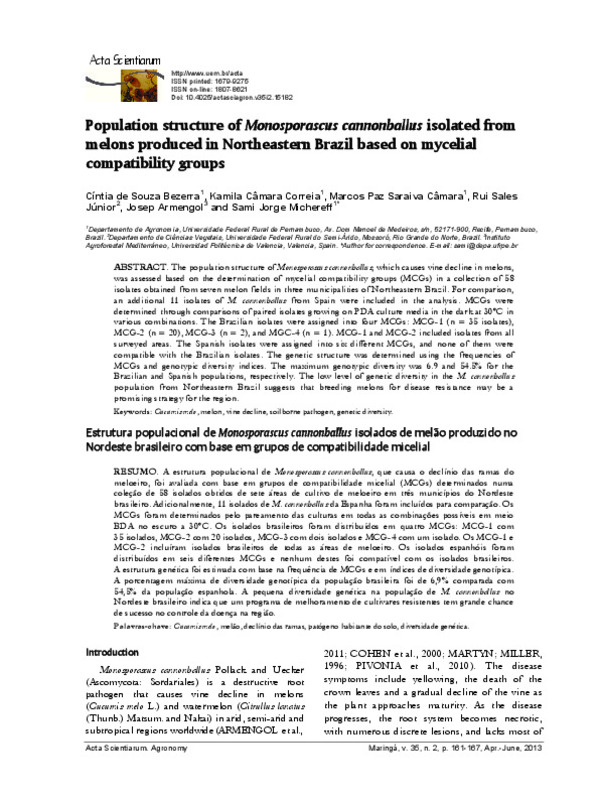JavaScript is disabled for your browser. Some features of this site may not work without it.
Buscar en RiuNet
Listar
Mi cuenta
Estadísticas
Ayuda RiuNet
Admin. UPV
Population structure of Monosporascus cannonballus isolates from melons produced in Northeastern Brazil based on mycelial compatibility groups
Mostrar el registro completo del ítem
De Souza Bezerra, C.; Câmara Correia, K.; Saraiva Câmara, MP.; Sales Júnior, R.; Armengol Fortí, J.; Michereff, SJ. (2013). Population structure of Monosporascus cannonballus isolates from melons produced in Northeastern Brazil based on mycelial compatibility groups. Acta Scientiarum. Agronomy. 35(2):161-167. https://doi.org/10.4025/actasciagron.v35i2.15182
Por favor, use este identificador para citar o enlazar este ítem: http://hdl.handle.net/10251/69074
Ficheros en el ítem
Metadatos del ítem
| Título: | Population structure of Monosporascus cannonballus isolates from melons produced in Northeastern Brazil based on mycelial compatibility groups | |
| Autor: | De Souza Bezerra, Cíntia Câmara Correia, Kamila Saraiva Câmara, Marcos Paz Sales Júnior, Rui Michereff, Sami Jorge | |
| Entidad UPV: |
|
|
| Fecha difusión: |
|
|
| Resumen: |
[EN] The population structure of Monosporascus cannonballus, which causes vine decline in melons,
was assessed based on the determination of mycelial compatibility groups (MCGs) in a collection of 58
isolates obtained ...[+]
|
|
| Palabras clave: |
|
|
| Derechos de uso: | Reconocimiento (by) | |
| Fuente: |
|
|
| DOI: |
|
|
| Editorial: |
|
|
| Versión del editor: | https://dx.doi.org/10.4025/actasciagron.v35i2.15182 | |
| Código del Proyecto: |
|
|
| Agradecimientos: |
This research was partially funded by CAPES (Project 203/2009 - International Cooperation CAPES-Brazil/DGU-Spain). We are thankful CNPq for the research fellowships granted to C. S. Bezerra, M. P. S. Camara, R. Sales Junior ...[+]
|
|
| Tipo: |
|









